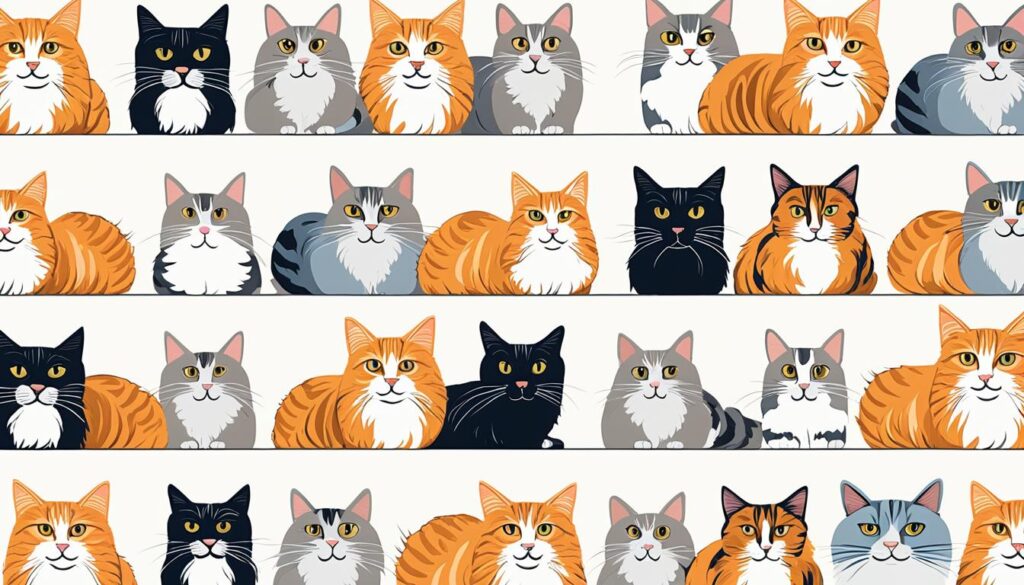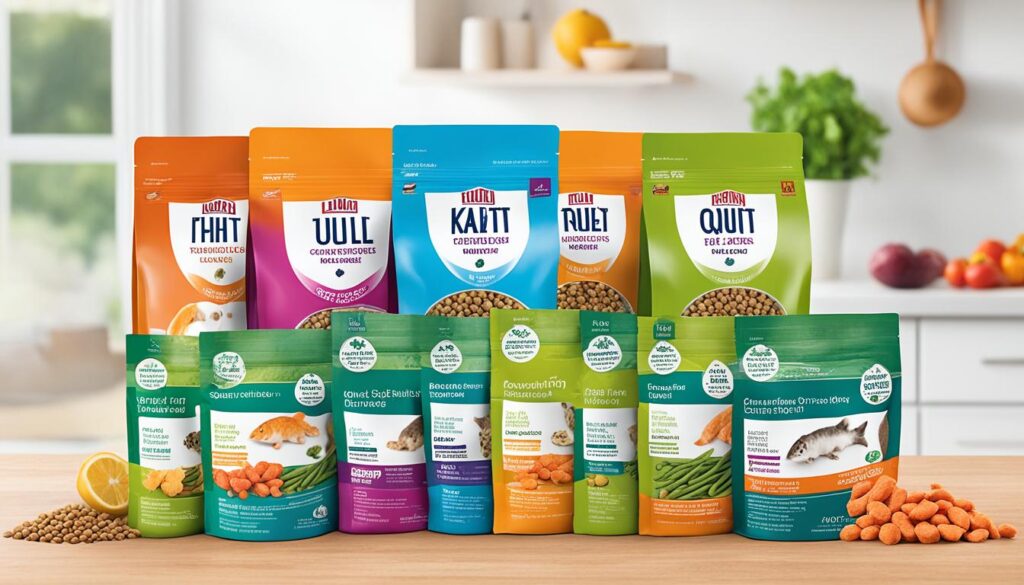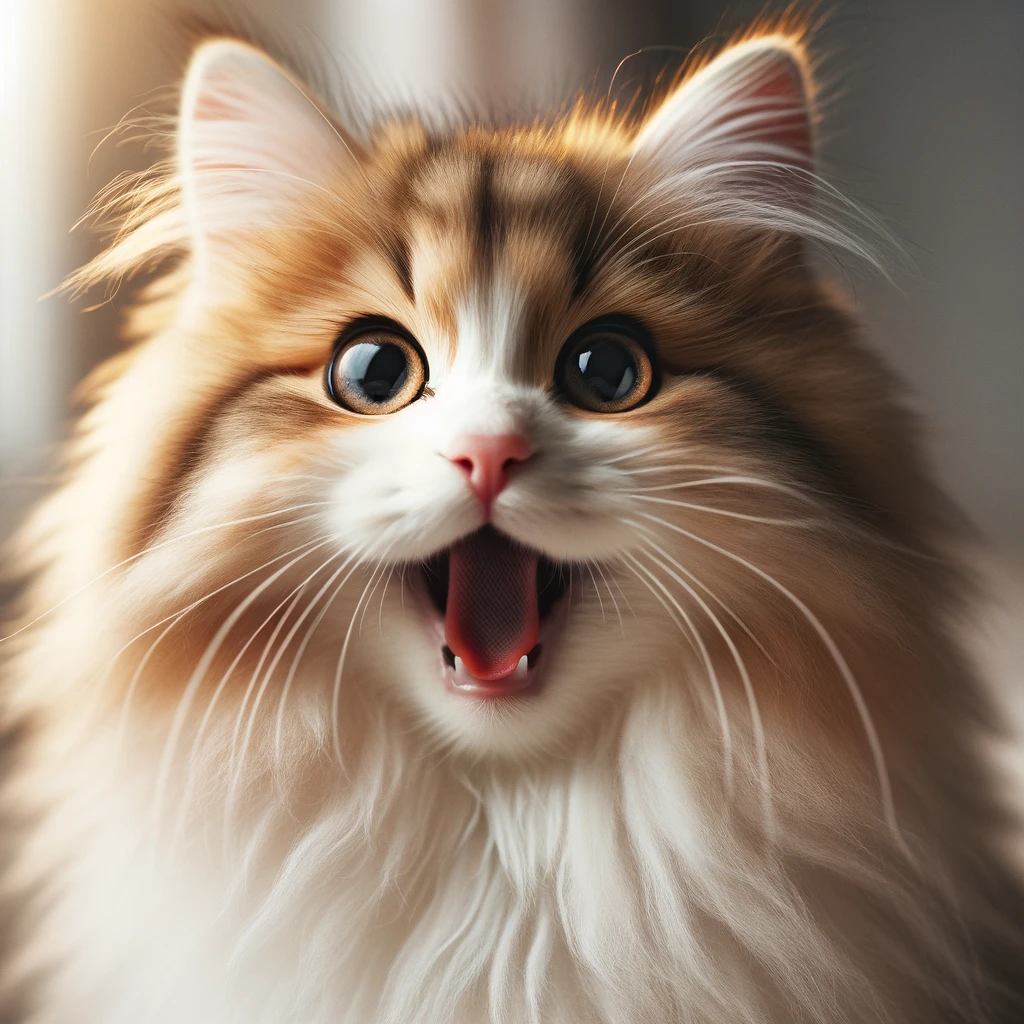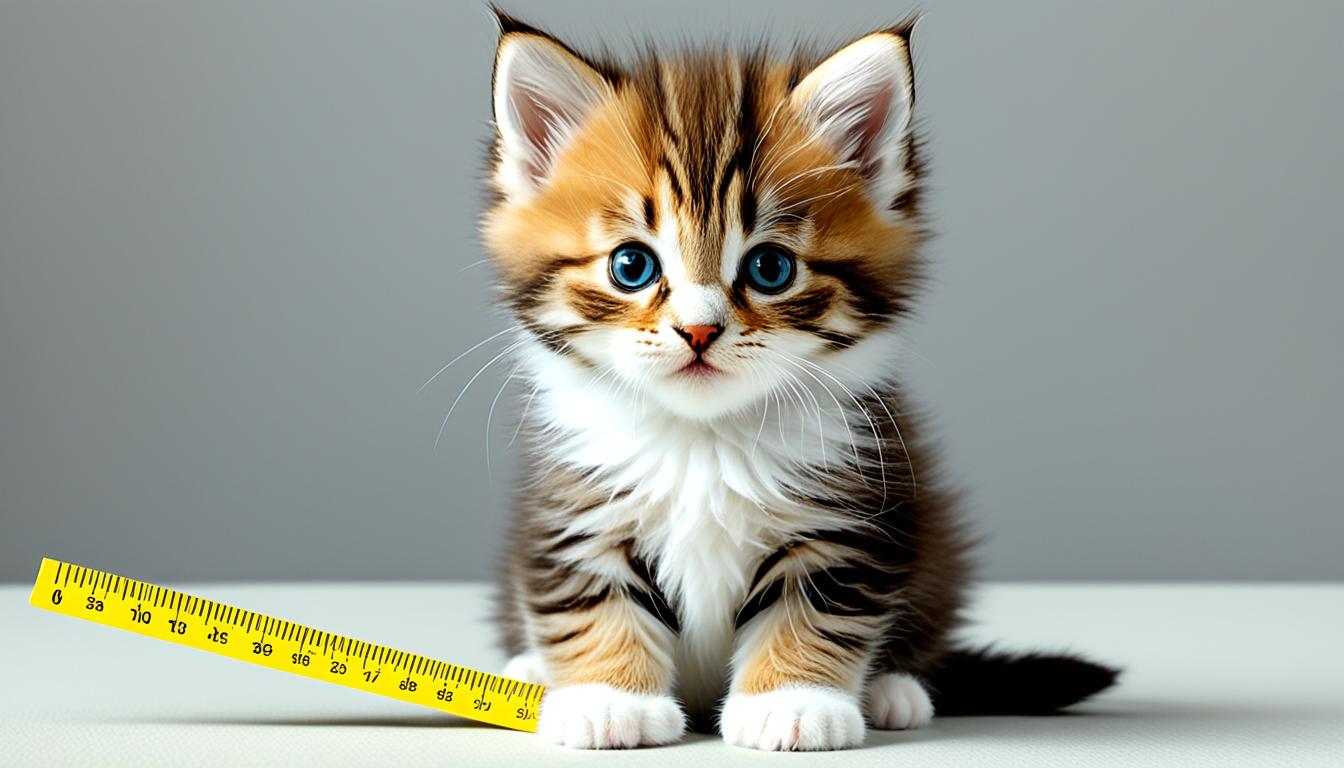As an Amazon Associate I earn from qualifying purchases.
Watching your cat grow is like watching a bond form. Remember when you first met them? They were a tiny ball of fur. Those early moments marked the start of an incredible journey through various stages of life.
Whether you’re using a chart or simply watching your cat grow, it’s a journey worth noting. It’s not just about time passing. It’s about celebrating every phase of your cat’s life. Understanding their growth stages helps us care for them better, ensuring they’re happy at every age.
From their first days to their playful kitten months, and all the way to their calm adult years, every stage is special. Let’s explore together when cats stop growing, enjoying every change as it comes.
Key Takeaways
- Most cats reach their full size around the 1-year mark, with some breeds growing up to 2 years.
- Breed, gender, genetics, and health are key factors influencing a cat’s growth rate and eventual size.
- Regular veterinary visits are vital for monitoring healthy growth from kittenhood to adulthood.
- Feline growth milestones occur at various stages, highlighting the importance of attentive care for your cat.
- An understanding of the kitten growth timeline can aid in providing the right nutrition and environment for your cat’s development.
Exploring the Kitten Growth Timeline
When you start your journey with a kitten, you see the important steps of their growth. You witness everything from their first moments to their journey into adulthood. Knowing the kitten growth timeline helps any pet owner care better. Each stage brings new events and memories. It also ensures your kitten gets the right care.
Understanding the Newborn Phase
Kittens depend fully on their mom for warmth and food when they’re born. This time is crucial for their growth. Soon, they open their eyes for the first time. This is a key moment in the kitten growth timeline. How much they weigh early on tells us a lot about their health.
The Transitional Stage of Kittenhood
At about three weeks, kittens hit a big growth spurt. They start to walk and explore everything with excitement. Making sure they have a safe place is key. This time is important for their teeth and coordination too.
Approaching the Juvenile Milestones
From four months to almost a year, they are in the juvenile phase. This time is important for their growth. They become more independent day by day. Their cat growth rate slows as they play more. They also get better at making friends with people and other cats.
Breed-Specific Growth Patterns in Cats
Understanding breed-specific growth in cats is essential for their health and development. A cat size chart gives a basic idea. Yet, the true cat growth rate and mature cat size rely on breed and genetics. Large breeds like Maine Coons grow up to 4 years. In contrast, the Siamese mature faster.
The adult sizes of different cat breeds are interesting. Our comparison chart below shows this growth and size variety among popular breeds.
| Breed | Typical Growth Rate | Estimated Mature Size |
|---|---|---|
| Maine Coon | Slow to Moderate | 10-25 lbs |
| Siamese | Rapid | 5-10 lbs |
| Ragdoll | Moderate | 10-20 lbs |
| Persian | Slow to Moderate | 7-12 lbs |
| Bengal | Rapid | 8-15 lbs |
Remember, these figures are just averages. An individual cat’s genetics can affect its size, health, and life span. Cats from larger breeds tend to be bigger, and the same goes for smaller breeds.
Growth patterns are just a part of your cat’s journey to adulthood. Keeping an eye on their development, feeding them well, and regular vet checks are crucial. These steps ensure your cat grows up healthy and happy.
When Do Cats Stop Growing?
It is important to know when do cats stop growing if you own a cat. Most cats are fully grown by the time they are 1 year old. This is when they reach mature cat size. Some breeds, especially the larger ones, may grow until they are about 2 years old.

The cat growth rate also depends on whether the cat is male or female. Male cats usually grow slower but get slightly bigger than female ones. Choosing to spay or neuter your cat can also affect their final size and rate of growth.
- Most cats reach full size by 1 year of age
- Larger breeds may grow up until around 2 years
- Male cats typically grow larger and at a slower pace compared to females
- Spaying or neutering can influence the overall size and growth rate
Keep an eye on your cat’s growth, considering these factors as a guide. Remember, a healthy diet and regular vet visits help ensure your cat grows well. This helps your cat reach its full size potential.
The Role of Nutrition in Feline Growth
Good nutrition is key for your kitten’s health early on. It helps with proper kitten weight progression and follows the critical kitten growth timeline. We’ll look at feeding your growing cat to achieve a proper mature cat size.
Kitten Diet Essentials
Kittens need a food packed with nutrients right after they’re born. Their food should be high in calories and protein and enriched with vitamins and minerals. This ensures your kitten develops strong bones and muscles.
Feeding your kitten as the vet advises ensures they grow well.
- A balanced blend of proteins and fats supports vigorous growth and energy needs.
- DHA for brain and vision development.
- Calcium and phosphorus for healthy bone and teeth formation.
- Adequate hydration through wet food or water to aid in urinary health.
Transitioning to Adult Cat Food
When your kitten is 9 to 12 months old, it’s time to start feeding them adult food. Adult cat food has fewer calories, suited for their slower growth. Watch how you change their food to ensure they keep growing healthily.
Remember, the transition should be slow and steady, mixing increasing portions of adult food with the familiar kitten food over a week or so.

| Age Range | Kitten Food Characteristics | Adult Cat Food Characteristics |
|---|---|---|
| 0-6 months | High in protein and calories for growth | Not recommended for kittens this age |
| 6-12 months | Continued high-protein, less frequent feedings | Begin introducing in small amounts |
| 12+ months | Gradual transition to adult food | Lower in calories, maintains healthy weight |
Changing your cat’s diet as they age is crucial for their health. For advice tailored to your cat’s needs, speak to your vet.
Identifying Signs Your Cat Has Reached Maturity
Knowing how your cat grows is key to seeing them become an adult. You need to spot when they stop growing in size and weight. Knowing the cat size chart helps see these changes.
It’s not just about how big they get. It’s also noticing how they change, both in how they look and act. Let’s explore how to tell your cat is growing up. And let’s enjoy seeing them in all their grown-up glory.
Physical Indicators of Growth Cessation
Wondering if your cat is fully grown? Look for no changes in their body size. When they don’t grow taller or heavier, they’re likely adult size. Signs like strong muscles and their head and body fitting together well also show this.
Compare your cat to a cat size chart to check their growth. Here’s a quick look at what you might see:
| Age | Average Size | Description |
|---|---|---|
| 6 months | Kitten/Young | Still growing, playful, developing physical traits. |
| 1-1.5 years | Young Adult | Most growth complete, may fill out and gain muscle. |
| 2+ years | Fully Grown | Size stabilized, displays adult physical characteristics. |
Behavioral Changes in Grown Cats
Adult cats show changes beyond size. They become calmer and more composed. Grown cats also act confidently in their space. This shows they’ve moved past kitten behaviors.
As they grow, their unique personalities really shine. They often become more dignified and like to do things on their own. These changes are important. They show your cat is getting older and more mature.
Conclusion
Knowing when do cats stop growing is key for any caring cat owner. It helps you support your cat’s development. Most cats are fully grown by their first year. But, understanding each cat growth stage improves their health.
Keeping your cat healthy means more than just love. Regular vet visits are crucial. They help check your cat’s growth and health. Feeding your cat the right food for their age is also important. It helps them grow strong.
Each cat grows at its own pace. Some might take longer than 12 months to fully grow. If you’re ever unsure about your cat’s growth, ask a vet for advice. The aim is to see your pet grow up healthy and happy.
FAQ
What are the primary cat growth stages?
Can you describe the kitten growth timeline?
What are feline growth milestones?
How do I determine my cat’s development age?
At what age is a cat considered to be of mature size?
How does the cat growth rate differ among breeds?
What information does a cat size chart provide?
How does spaying or neutering affect kitten weight progression?
When do cats generally stop growing?
What are the essentials of a kitten diet?
When should I transition my cat from kitten to adult cat food?
What are some physical indicators that a cat has stopped growing?
How do behavioral changes signal that a cat has reached maturity?
As an Amazon Associate I earn from qualifying purchases.

